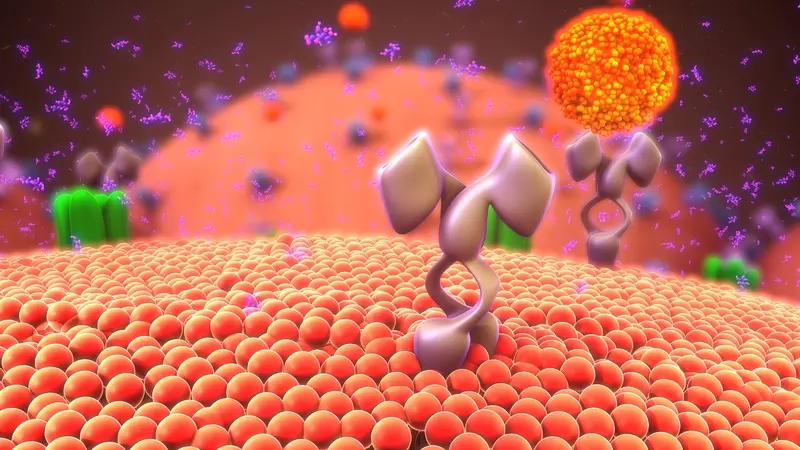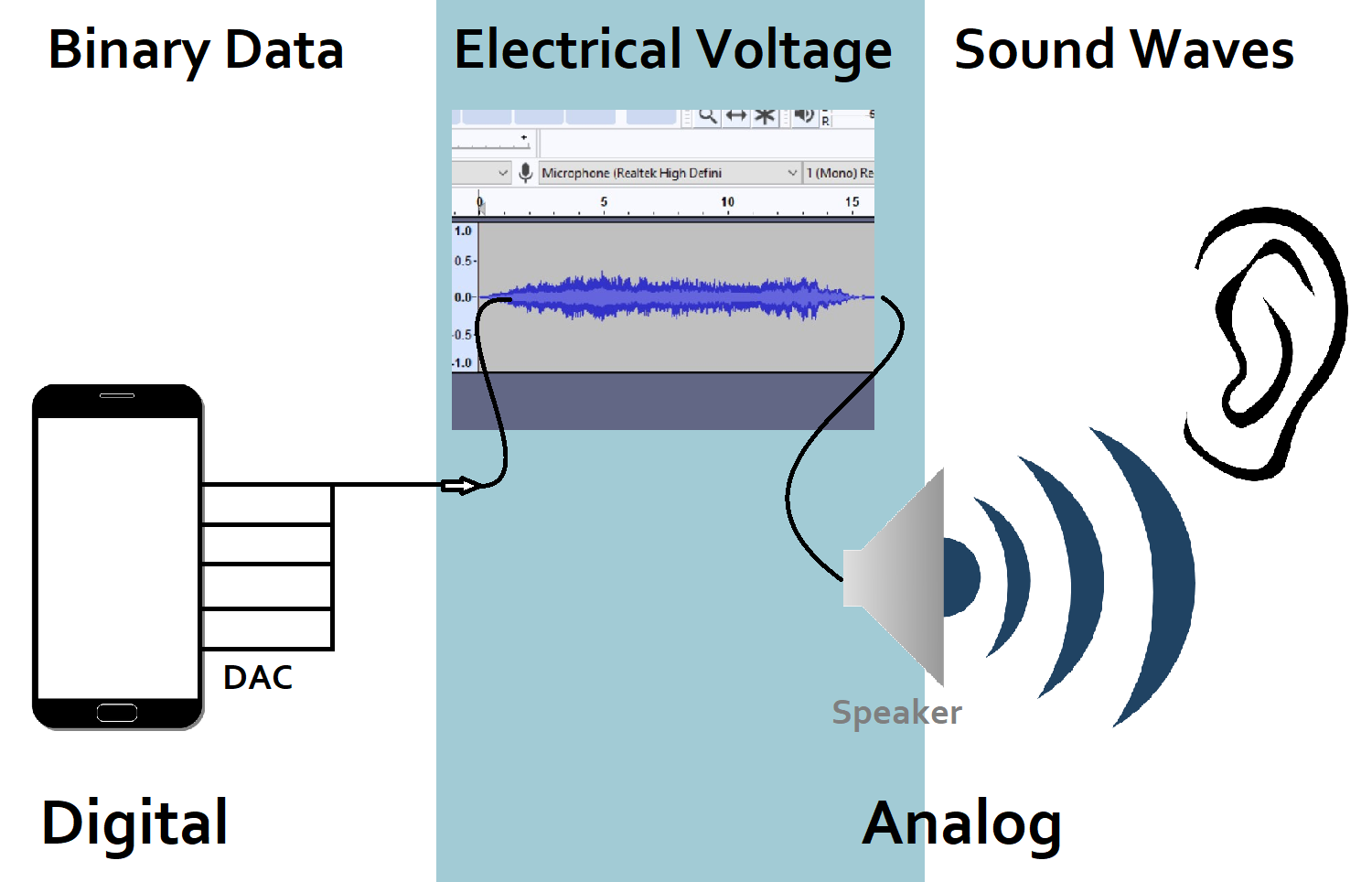A schematic representation of the digital-to-analog conversion process.
[Originally published as Cells Have Digital-to-Analog Converters]
Suppose you want to listen to some music. You pull out your iPod or your phone, put the earbuds in your ears, and you start to enjoy your favorite tunes. You probably don’t think about the process that makes this possible: digital-to-analog conversion. Computers and devices based on them store all of their information digitally. On your iPod or phone, the music is stored as a string of 1’s and 0’s. The 1’s represent electricity being on, and the 0’s represent electricity being off. So as your iPod or phone “plays” the music, it comes out digitally—as pulses of electricity, either on or off.
If you tried to listen to those pulses, they would make no sense to you, because your ears aren’t designed to hear things digitally. Instead, they are designed to hear sounds in a continuous flow. We call this analog. So while your iPod or phone stores music digitally, it must convert that music into a continuous, analog signal so that you can understand it. It does this with an electrical circuit called a digital-to-analog converter (DAC).
The digital-to-analog converter in your phone or iPod produces a high-quality analog signal, packed into a tiny space. That’s what really makes it sophisticated. It can do a complex job while taking up very little room.
It turns out that cells have essentially the same ability, but it is significantly more sophisticated than what you find in an iPod or phone.
Researchers at Harvard Medical School were trying to better understand how cells respond to their environment. As they note, there are many processes that help cells do this, but they concentrated on the process by which a cell knows how often to use the genes in its DNA. When a cell reads a gene, the information on that gene is copied and then sent to protein-making sites in the cell. The process of copying a gene’s information is called transcription.
Well, the rate of transcription changes for each gene, depending on the needs of the cell. What determines how the transcription changes? Here’s what the authors say:
Cells must coordinate responses to many stimuli, including signalling cues from other cells, the extracellular matrix, hormones and active compounds. As they are subject to feedback control, these response pathways are usually ‘on’ or ‘off’ in nature. By contrast, transcriptional changes can be ‘dialled’ up or down and provide a composite response to multiple inputs over time. In line with this, signal transmission to chromatin can be compared to a digital-to-analogue converter (DAC) that takes ‘on’ and ‘off’ signals and converts them into a continuous output that can vary in amplitude over time. We speculate that histone tails may function in this way, acting as a site that stores signals and integrates them to regulate the transcriptional programme.
In other words, the signals that cells get to inform them about their environment are digital. However, the cell’s response is smoothly varying so the exact needs of the cell can be met. That means the cell’s response is analog. Thus, the digital signals received by the cell must be converted to analog signals that influence the cell’s response. As a result, each cell has a digital-to-analog converter! The authors suggest that this is done at specific sites on a class of proteins (histones) around which the DNA is wrapped.
Now think about that for a moment. Your iPod’s digital-to-analog converter is sophisticated, in part, because it is so small. However, on the cellular level, it’s larger and more clumsy than the digital-to-analog converter pictured above! A cell’s digital-to-analog converter is so small that DNA molecules can wrap around it!
The more I learn about nature, the more in awe I am of the One who created it!






